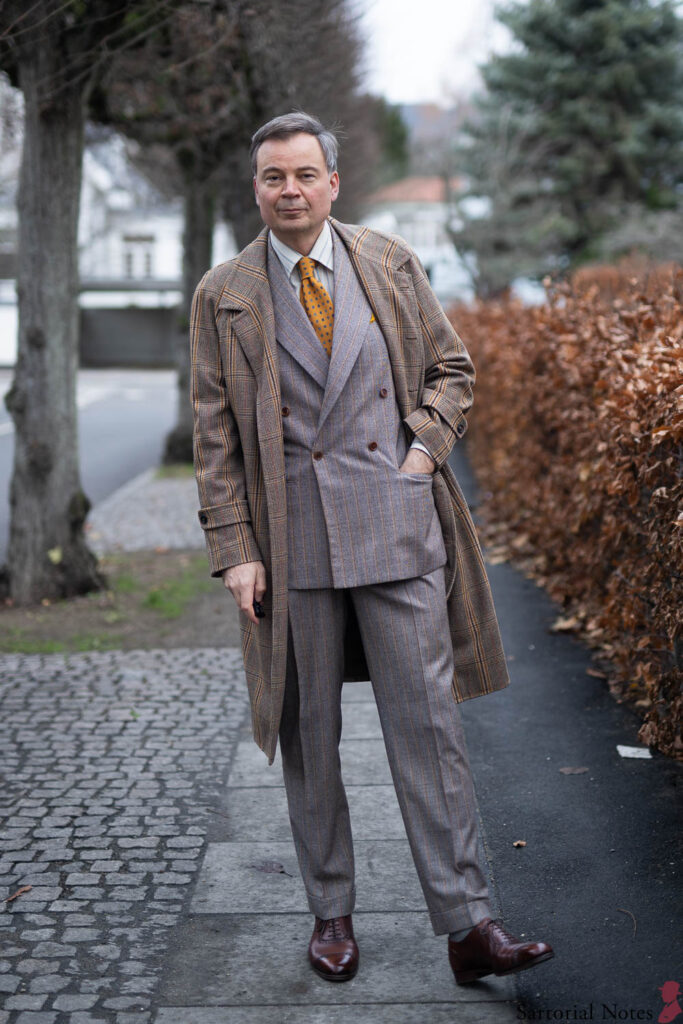
One can look at classic menswear as a set of effects or tools.
The most important tool is fit. Firstly, the clothes must be in spatial harmony with the given body. Dress and man should not conflict physically. Moreover, the fit of the garment must flatter the body, hide imperfections and accentuate assets.
Secondly, you have the textures of the textiles. You must coordinate a tweed jacket with a pair of corduroys or flannel trousers, ordinary worsted trousers do not harmonize with it. One could say that the textures of the individual parts of the garment must be related in terms of warmth and sturdiness, shoes included.
Colours are a third tool. They can contrast more or less harshly. The harsher the contrasts, the more energy an outfit has.
Patterns interact with colours. I usually advice to avoid patterns if the use of colours is contrasting and lively. Conversely, patterns can add energy to a close to monochrome and dull colour scheme.
Design details matter. Flap pockets or jetted pockets, trouser turn-ups or not, single breasted or double breasted. Design details are a fifth tool in a classic attire (along with accessories). Simplicity is not always the right choice. Remember.
